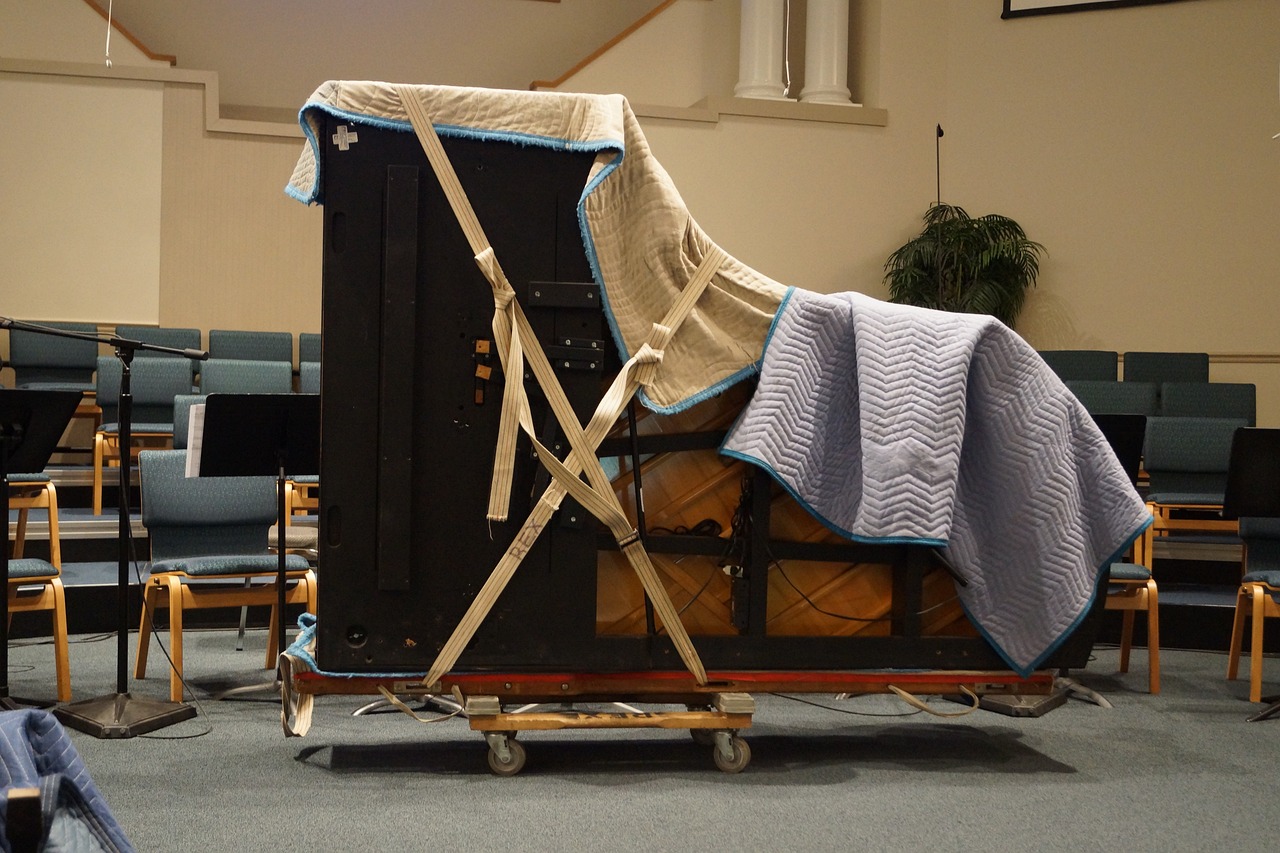Piano moving is a rather arduous task that requires not only serious manpower but also accurate preparation. These musical instruments weigh more than any other (up to 1,000 lbs.) and are expensive and valuable items for their owners (priced up to $100,000). Hence, being strenuous and tedious, piano moving carved its unique niche in the whole moving industry, and today, most people entrust the transfer of their musical instruments to professionals.

However, if you are considering moving your piano without relying on experts, here we have listed all the phases and steps the process will take.
The Preparation Process
Before you move the piano even an inch, ensure you have all the necessary supplies and materials, enough manpower, and accurate calculations of the area.
- Plenty of moving blankets or thick towels will protect the musical instrument, while several rolls of tape are needed to secure them. When moving an upright piano, a dolly will be necessary to hold its weight. If you have a grand piano to move, find an appropriate size piano board (a piano skid board), straps, and a screwdriver to hold the instrument in place.
- The next phase refers to collecting a team of reliable helpers. Depending on the instrument’s size and the move’s complexity, you will need up to six men in good shape, better they have experience moving heavy items.
- Measure the piano and all the areas in the home that the instrument must pass through. Particularly, measure all staircases, doorways, and hallways to check how to maneuver the piano board. Also, protect floors and furniture the piano could hit during the move. Use baby-proof bumpers to cover any sharp edges that may scratch the instrument.
Finally, once everything is ready and you want to start the moving process, lock all pets in a room and ensure no kids and adults not involved with the move are around. The last thing one wants is a 500-lb tripped over a child or pet.
The Moving Process
The process of moving the piano may slightly differ per the instrument type – upright or grand. The moving of the latter is more involved, given the bigger size and higher weight.
Upright piano moving:
- Bubble-wrap the piano keys and pedals.
- Close the piano lid and use a foam packing sheet to envelop it. Secure it in place with tape.
- Cover the piano from all sides with moving blankets or thick towels.
- Use more moving or ratchet straps to double secure the blankets.
- Position the moving team evenly on both piano sides and designate someone to slide the dolly underneath. Be cautious when bending your knees so as not to injure them.
- Guide the instrument carefully through the house when passing through doorways or corners.
- When the piano is already in the truck, tie it down with ratchet straps.
- After reaching the destination, place one more person in front of the instrument for more precise control.
Grand piano moving:
- Start by wrapping the bench with a moving blanket and securing it with tape. Ensure the blanket’s corners cover both legs to minimize possible damage and scratches.
- Remove the music rack and pack separately, again with a moving blanket fastened with tape.
- Raise the lid off and cover it with blankets completely. Tape around its width several times, making sure the blankets will not slip off.
- Before you remove the legs of the musical instrument with a screwdriver, make sure your moving team can accurately tilt the piano to one side so that it doesn’t fall over.
- Cover the piano’s body with moving blankets thoroughly and loop the tape around the width for security.
- Also, you can use plastic moving wrap to ensure the blankets remain in place.
- Shift the piano back so that the board can easily slip underneath it. Place it on the board carefully (engage several moving team members in the job).
- Guide the piano to the truck as you do with an upright piano moving.
- Tie the instrument in its place in the truck with ratchet straps.
- Wrap every leg in a moving blanket individually, and make sure you don’t lose the screws.
- Place the legs, bench, and music rack accurately into the moving truck.
- When the piano is being unloaded, carefully roll it down the ramp.
When the Piano Is Moved
When you have successfully unloaded the piano, reassemble it accurately with the whole team. They must help you to steady the instrument when you reattach its legs. After finishing, wipe it with a mild soap solution and a well-squeezed cloth. Also, the piano may get out of tune during a move (due to the frequent jostling around the truck and the instrument’s shifting parts), so hire a specialist to fix it.
So, even though piano moving is possible to handle on your own, the risk of damaging it is still significantly high. We still recommend applying to a professional team to safeguard yourself against such a scenario and rest assured it’s in safe hands.




